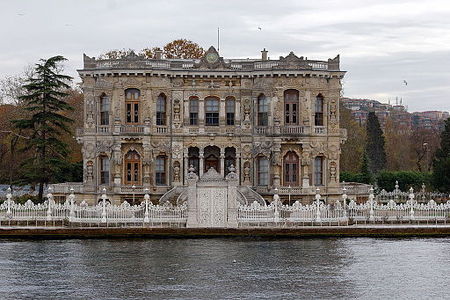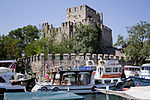Küçüksu Pavilion
1857 establishments in the Ottoman EmpireBaroque Revival architecture in TurkeyBeykozBosphorusHistoric house museums in Turkey ... and 5 more
Houses completed in 1857Museums in IstanbulNigoğayos Balyan buildingsOttoman palaces in IstanbulTourism in Istanbul

Küçüksu Pavilion (Turkish: Küçüksu Kasrı), Littlewater Pavilion a.k.a. Göksu (Skywater) Pavilion, is a summer pavilion in Istanbul, Turkey, situated in the Küçüksu neighborhood of Beykoz district on the Asian shore of the Bosphorus between Anadoluhisarı and the Fatih Sultan Mehmet Bridge. The pavilion was used by Ottoman sultans for short stays during country excursions and hunting.
Excerpt from the Wikipedia article Küçüksu Pavilion (License: CC BY-SA 3.0, Authors, Images).Küçüksu Pavilion
Küçüksu Caddesi,
Geographical coordinates (GPS) Address External links Nearby Places Show on map
Geographical coordinates (GPS)
| Latitude | Longitude |
|---|---|
| N 41.07845 ° | E 29.06485 ° |
Address
Küçüksu Kasrı (Küçüksu Palace)
Küçüksu Caddesi
34810 , Göksu Mahallesi
Turkey
Open on Google Maps





